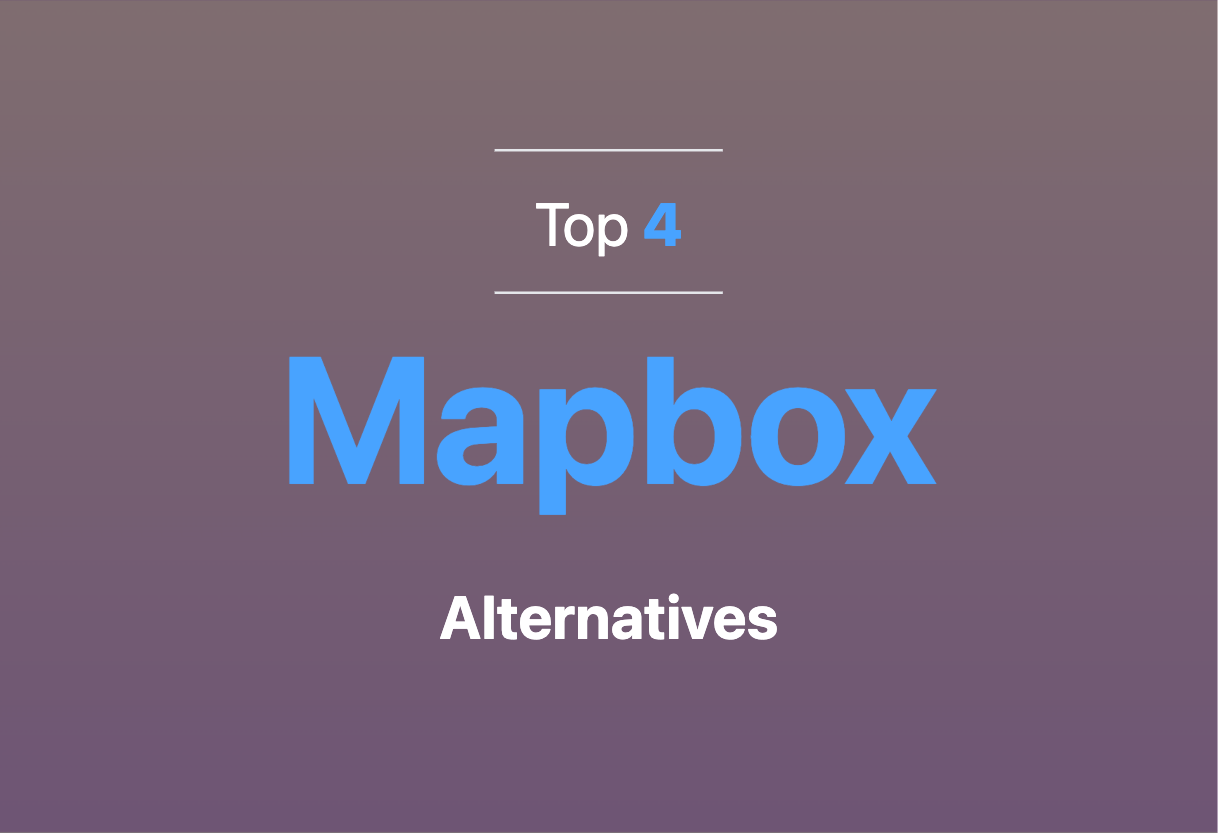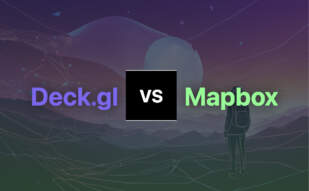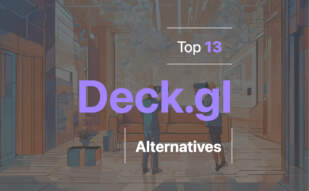Mapbox is a leading location data platform, offering enterprise-grade location, traffic, and movement data through APIs for routing, navigation, and delivery matrixing. Utilizing vector tiles and 3D rendering tech, it supports various applications across web, mobile, automotive, and gaming sectors.

For those exploring alternatives to Mapbox, consider OpenLayers, Cesium, Deck.gl, and D3.js.
OpenLayers

A major tech-player in the digital mapping sector–OpenLayers specializes in creating cutting-edge, adaptable map applications for the web world.
OpenLayers Top Features
- Support for diverse data formats, including geo-referenced images, vector tiles, and both open and proprietary vector data.
- A robust API that facilitates easy setup of map applications and adeptly handles complex requirements.
- Integration of opensource OpenStreetMap via ‘ol/layer/Tile’ & ‘ol/source/OSM’
- Enhances functionality by allowing road traffic accident data incorporation into maps via Web Feature Service
| Feature | Description |
| Language Learning Model (LLM) Alerts | OpenLayers offers alerts for LLM failures, simplifying model management and the identification of edge cases and production errors. |
| Data Integrity Testing | Through automatic testing, OpenLayers guarantees data integrity, consistency, and drift, along with performance, fairness, and robustness. |
| Real-time Tracking | Tracks model progress in real-time with alerts on models in production for agile software delivery. |
OpenLayers Limitations
- OpenLayers support for ‘OffscreenCanvas’ used in parallelizing UI and rendering tasks is not widely recognized in mainstream browsers.
- Older browsers will require polyfills for compatibility with OpenLayers applications.
- There may be limitations or challenges in the ‘off-premises’ hosting option.
OpenLayers Pricing
Being an open source platform, OpenLayers is freely available to developers worldwide.
OpenLayers Use Cases
Use case 1
An ideal recourse for developers seeking to integrate complex geographical data with interactive maps in web applications.
Use case 2
OpenLayers is pivotal for businesses relying on safe AI deployment globally.
Use case 3
An essential tool for understanding and visualizing intricate road traffic accident data for better planning and solution formulations.
Cesium
Cesium, a versatile platform renowned for its importance in Augmented Reality and Web Graphics Technology, diligently caters to different sectors with its extensive range of plans.
Cesium Top Features
- Community to Custom plans catering to various needs and budgets.
- Highly scalable with provisions for on-demand pricing.
- License under the Apache License Version 2.0, granting irrevocable copyright license.
- Endless application potential with no limit on apps or end-users for plans.
- Incorporates renowned code sources including NVIDIA GameWorks Graphics Samples and zip.js by Gildas Lormeau.
- Protects contributors with terms for redistribution, warranty disclaimers, and a cap on liability.
| Community Plan | Free and apt for personal or exploratory projects |
| Commercial Plan | $149/month, offers faster solutions for business purposes |
| Premium Plan | $499/month, includes more streaming & storage opportunities |
| Custom Plan | Scalable solutions with price upon inquiry, designed for evolving business needs |
Cesium Limitations
- Annual gross revenue or funds raised over $50K require a paid account.
- Commercial licenses are required for government projects and funded educational research.
Cesium Pricing
The pricing plans of Cesium range from a complementary Community plan to Custom plans for larger needs. The Commercial plan stands at $149/month while the Premium plan is available for $499/month.
Cesium Use Cases
For personal, non-commercial use
Cesium’s Community plan serves as an excellent resource for personal projects or dabblers exploring the scope of Augmented Reality.
For commercial, enterprise use
With plans like Commercial, Premium, and Custom that promise faster solutions and increased streaming/storage capacities, Cesium suits the requirements of growing businesses.
For governmental or funded educational projects
Commercial license requirements for such projects ensure lawful, accountable use of Cesium’s resources while recognizing the platform’s consequential role in progressive tech.
Deck.gl
Enter the realm of Deck.gl, an intricate tool designed for the visualization of large-scale data. Powered by WebGL2, Deck.gl garners traction for simplifying large data visualization with varied view options and interactive event handling features.
Deck.gl Top Features
- High-Performance: Designed with WebGL2, assuring the utmost efficiency in speed and performance while rendering and updating large datasets.
- Visual Layers: Offering a variety of layer types including icons, polygons, and text, enhancing your data visualization game.
- Interactive Event Handling: Supports picking, highlighting, and filtering data thereby facilitating seamless maneuvering across vast data terrains.
- Open to Contributions: Part of the vis.gl portfolio under OpenJS Foundation, it invites contributions from the open source community.
| Integration | Learning Tools |
|---|---|
| Deck.gl enjoys third-party integrations like deckgl-typings, mapdeck, and many more, allowing flexible use of resources. | The learning curve is well-supported by API docs, interactive playgrounds on Codepen, and even a Medium blog. |
| Supports a plethora of usage modes from Script Tag, NPM Module to React and Python. | Open to community interactions on platforms like Slack. |
Deck.gl Limitations
- Lack of specific data sources, relying largely on contributions and backers.
- Complexity in handling for novice users due to the wide range of features and options.
Deck.gl Pricing
Elevate your tech game with Deck.gl, a completely open-source tool that is absolutely free to use.
Deck.gl Use Cases
Use Case 1: Data Analysts
The intricate layers and projections found in Deck.gl facilitate deep data analysis, providing insights from large data sets in a visual and digestible manner.
Use Case 2: Web Developers
With its flexible APIs, varied usage modes and third-party integrations, Deck.gl serves as a powerpack for web developers aspiring to incorporate large scale data visualizations.
Use Case 3: Open Source Contributors
Given its open-for-contribution nature, Deck.gl provides an exemplary avenue for enthusiasts looking to contribute to data visualization tools and gain community recognition.
D3.js
An expressive, low-level JavaScript library for dynamic web browser visualizations, D3.js (Data-Driven Documents), freely available and released initially in 2011, builds on SVG, HTML5, CSS standards.
D3.js Top Features
- Powerful SVG creation and manipulation using pre-defined functions.
- Data-binding capacity for advanced applications, with loaded data underpinning element creation.
- Support for various data formats such as JSON, CSV, geoJSON.
- Transitions for smooth value interpolations over time for attributes and styles.
- Comprehensive set of 30 independent modules, providing total control over the visualization process.
| Awards | Information is Beautiful 2022 & IEEE VIS 2021 Test of Time Award |
| Targeted Usage | Best for bespoke, dynamic visualizations for media organizations. |
D3.js Downsides
- Excessive for private dashboards or one-off analyses.
- Lack of overarching “chart” abstraction, though this grants flexibility.
- Due to low-level approach, knowledge of web standards and SVGs required.
D3.js Pricing
D3.js is a free, open-source library, making dynamic, data-driven graphics authoring accessible to the masses.
D3.js Use Cases
Use case 1: Media organizations
If you’re a media organization looking for bespoke, dynamic visualization with expressiveness, D3.js’s module structure grants you maximal control over the visualizing process.
Use case 2: Data Analysts
For those in academia or practice requiring data visualization, D3.js’s powerful data-binding and format support, plus transitions and elements selection, increases efficiency.
Use case 3: Web Developers
Web developers fluent in web standards and SVGs will find D3.js’s low-level approach and independent modules beneficial for devising unique data visualizations.
Hannah Stewart
Content writer @ Aircada, tech enthusiast, metaverse explorer, and coffee addict. Weaving stories in digital realms.





